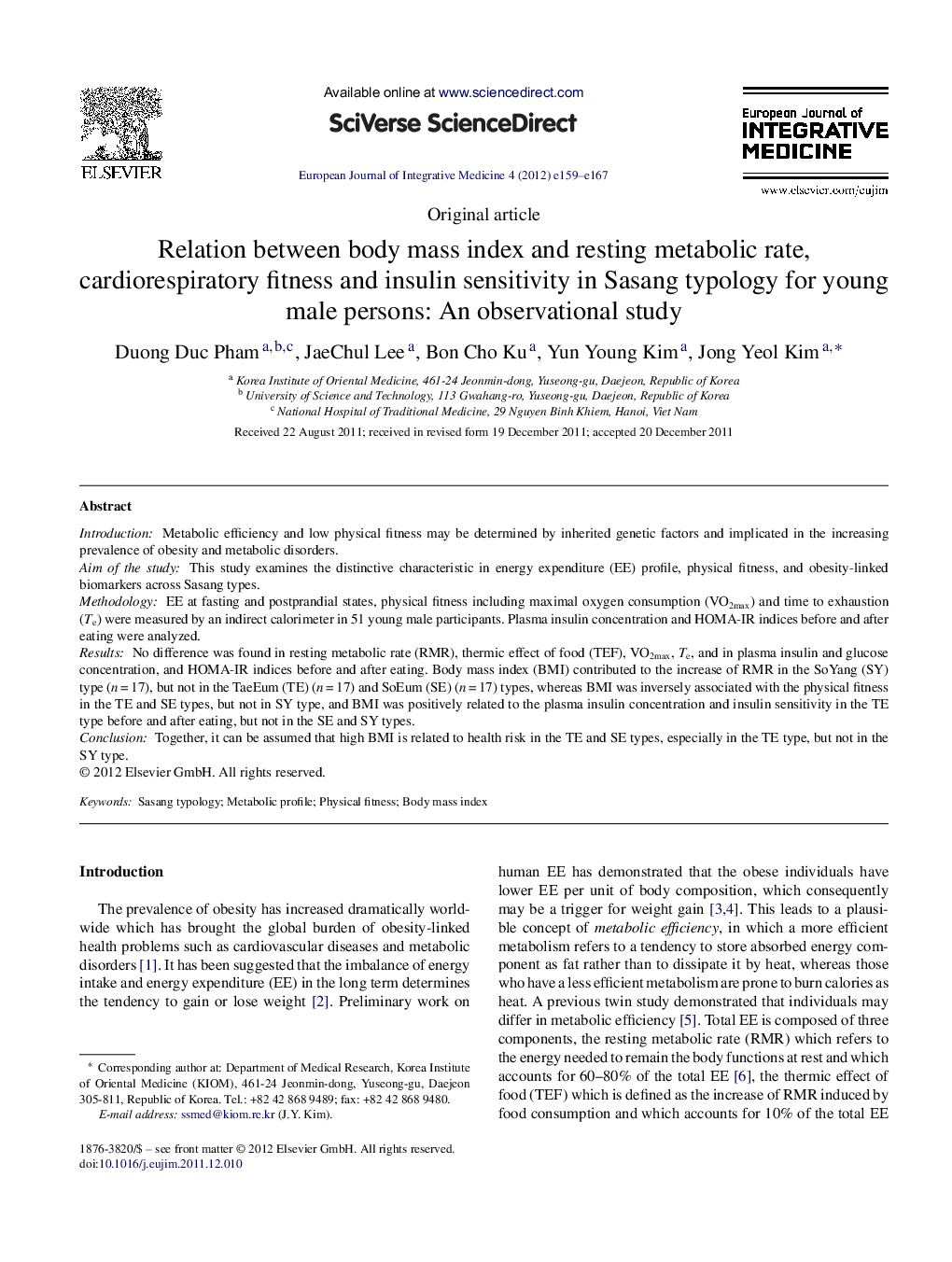| Article ID | Journal | Published Year | Pages | File Type |
|---|---|---|---|---|
| 5808318 | European Journal of Integrative Medicine | 2012 | 9 Pages |
IntroductionMetabolic efficiency and low physical fitness may be determined by inherited genetic factors and implicated in the increasing prevalence of obesity and metabolic disorders.Aim of the studyThis study examines the distinctive characteristic in energy expenditure (EE) profile, physical fitness, and obesity-linked biomarkers across Sasang types.MethodologyEE at fasting and postprandial states, physical fitness including maximal oxygen consumption (VO2max) and time to exhaustion (Te) were measured by an indirect calorimeter in 51 young male participants. Plasma insulin concentration and HOMA-IR indices before and after eating were analyzed.ResultsNo difference was found in resting metabolic rate (RMR), thermic effect of food (TEF), VO2max, Te, and in plasma insulin and glucose concentration, and HOMA-IR indices before and after eating. Body mass index (BMI) contributed to the increase of RMR in the SoYang (SY) type (n = 17), but not in the TaeEum (TE) (n = 17) and SoEum (SE) (n = 17) types, whereas BMI was inversely associated with the physical fitness in the TE and SE types, but not in SY type, and BMI was positively related to the plasma insulin concentration and insulin sensitivity in the TE type before and after eating, but not in the SE and SY types.ConclusionTogether, it can be assumed that high BMI is related to health risk in the TE and SE types, especially in the TE type, but not in the SY type.
